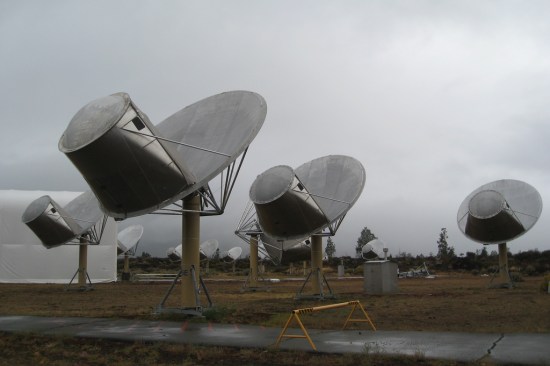SETI Needs Your Eyes to Scan the Skies for Alien Life
People have been turning over their computer’s processor power to the Search for Extraterrestrial Intelligence (SETI) with SETI@home for years. However, this was a passive affair, and didn’t really give folks an involved role in the hunt for E.T.. However, a new project called SETI Live launches today, and it needs your pattern-searching eyes to help track down possible signals from another world in a section of previously ignored radio data.
The SETI Live project is built on the Zooniverse citizen science platform, which hopes to harness the eyes of the Internet to help make new discoveries. At the heart of SETI Live is a region of the radio spectrum that has hitherto been ignored. The trouble, it seems, is that this part of the spectrum is where we do most of our own broadcasting. Despite having a host of sophisticated tools, SETI has struggled in this target rich environment and ignored it for years.
However, this could be a huge mistake, as Jill Tarter writes on the SETI Live blog:
IF (of course it’s a huge if) there is a technological civilization near enough to us – its distance in light years is less than half the time over which our technology has been transmitting at a particular frequency band – perhaps that civilization has noticed that the Earth is very ‘radio bright’ at certain frequencies. Perhaps it has transponded back a reply at the same frequencies, knowing that we would have receivers that work there.
And that’s where you come in. Once you log in to SETI Live, you’ll be presented with “waterfalls” of radio data. It’s a bit overwhelming at first, especially since most of what you’re looking at is random noise. However, a quick run through the tutorial and a tour of established signal patterns will soon get you on the right track. To identify a possible signal, simply click to define two points along the suspect transmission, enter some info about the signal, and your done. No knowledge of radio science required.
If you don’t think the human brain is a premiere pattern recognizing machine, take a look at these pictures. Your brain can’t help but see faces.
While there are reams of old data to go through, SETI is currently turning its ears towards the planets found by the Kepler probe. If you were wondering why it’s called SETI Live, you’re about to find out. When the dishes are pointed at these targets, the data will be made available to SETI Live users as fast as possible. If enough people spot something interesting, the telescopes can go back for a second pass. Lou Nigra writes on the SETI Live blog:
This is already pretty exciting on several levels – you’ll process SETI data fresh off the telescope, the telescope will be pointed at stars with promising planets, and if you identify something ET-like, it could trigger a follow-up measurement. Now, this is basically what the ATA computers normally do, so why bring a bunch of citizen scientists into the loop?
Of course, part of the problem with searching for alien signals is that we’ve never seen one before. It’s also not clear how successful people will be at spotting what researchers are expecting an E.T. signal to look like, or how weak a signal they can spot. Nigra writes that in order to investigate this, SETI Live will do some tests on its users as well with simulated alien signals mixed in with actual data.
So, we’re going to evaluate this by occasionally inserting data with an artificial ET test signal and collecting statistics on the results. Don’t worry, we will tell you immediately after you’ve classified one of these that it had a test ET signal and whether you caught it or not. […] We expect to publish the results of both of these studies so you will be contributing to some important signal analysis science. Some of this may also lead to improving SETI computer algorithms.
For those of us lacking the advanced degrees to actually work with radio telescopes, SETI Live is probably as close as we’re going to get. And as Tarter said on her blog post: “Everything you do will help us.”
(SETI Live via IEEE Spectrum, image via Brewbooks)
- SETI is back online with some help from its friends
- The square kilometer array dwarfs other radio telescopes
- Kepler’s first ever confirmed habitable zone planet
- There are probably oodles of habitable planets out there
Have a tip we should know? tips@themarysue.com
